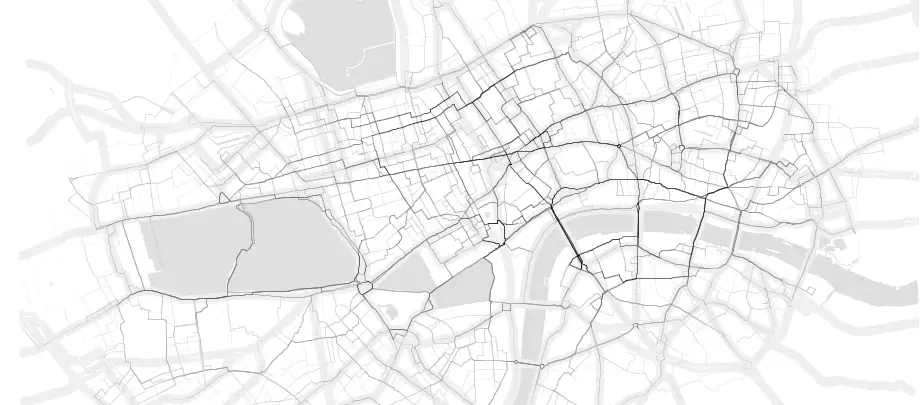The role of data in social innovation

To get from A to B in a city the choices are stark: Public transport, taxi, your own car or bike. If you think that is a lot then skip till the end of this post. But if you are like me, always trying to find the best way to get to places and normally none of the options above satisfy you, then continue reading.
A mayor problem to improve mobility is the little knowledge available on people's moving patterns – their schedules, ways and means to transport themselves. Commuters are perhaps the easiest and probably best analyzed scenarios, but they are only a fraction of all daily travelers. New approaches to collect data can unfold new potentials for social innovation.
Take the example of cycling. To improve cycling within a city one needs to resort to traditional data set to identify cycling patterns, such as questionnaires from cyclists. I honestly doubt city officials have a clear picture of cycling patterns – one only needs to look at poorly structured cycling paths across the world; ok, there might be a few exceptions. In London is an interesting experimental app called Cycle Hackney. It basically „records“ the daily routes of volunteer cyclists which are then compared to the official cycling tracks or routes around the city. The results are fascinating – cyclist take very different routes then those thought by city planners or public transport officials. The app scales data from male and female cyclist and shows their different their approach to cycling. The goal of this app is to make cycling safer.
In Boston the city now uses data from the controversial taxi service Uber to find out how citizens travel on daily basis. Traditional cab drivers could also share larger amounts of more interesting data, even aggregated and anonymized. Rush hour is an obvious and well analyzed phenomena, but there are other numerous smaller moving patterns which also need to be analyzed, for example, how can youth get home in the night safer?
A way to strengthener such analyses for social innovation is combining data and direct research for example through interviews (ethnography) to really understand how people move around cities and what are there challenges and possible solutions. However, particularly crowdsourced data delivers you a bird-eye-perspective on social behavior. A formally regulated traffic system is just one side of the coin; how people actually cycle through the city is another. This is where social innovation and data can nicely merge.
The city of Jakarta is cooperating with Waze, a smartphone navigation app that does not only allow users to receive traffic information, but also reports back from every user. I had an interesting conversation with a Google engineer just the other day, who mentioned that thanks to the many Android smartphones they are able to gather tremendous feedback in real-time about mobility. A few people stuck in a traffic jam are enough to recognize the pattern. But it is worth mentioning that Google is not really great when it comes to sharing such data openly. Indonesia, in just one year, has now almost a million Waze (a Google company) users. Have a look at the video.
Another progressive example is car-sharing. It is very similar to car rentals, but with very different approaches and solutions. It has a more flexible and independent approach as opposed to car renting. There are two models time-based vs. the distance based model. In the first one, you book a car for a few hours and return to its place of origin, without having to go through the long contract signing process that is. The second one is like car2go, where you can hop into the next car available parked the closest to you and leave it somewhere else in the city, wherever your destination may be. The same model is also available for bicycles. The result is a greater choice of transport. Going by public transport in one direction and hop into a car back or vice versa. Unfortunately, public transport itself is little innovative to say the least, but hopefully these new competitors will change that, or the citizens themselves who engage through other means such as shared rides.
This is highly needed as the number of commuters and daily travelers is rapidly increasing, and especially because we are so stuck in traditional mobility solutions.
By the way we have helped the public transport of Berlin and Climate-KIC with our platform to crowdsource new ideas for a greener public transport.